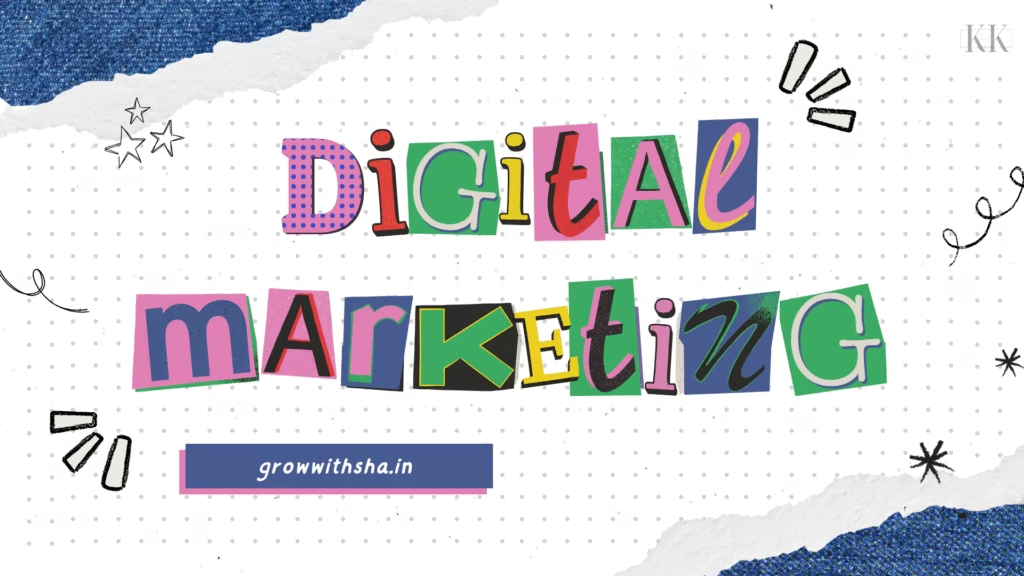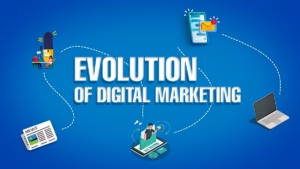In today’s commerce environment, digital marketing capabilities have transitioned from optional to essential for business success. With over 5.3 billion internet users globally, digital marketing has become the cornerstone of brand visibility, customer engagement, and revenue generation. Unlike traditional marketing, which relies on print ads, billboards, and television commercials, digital marketing leverages online channels to reach highly targeted audiences with measurable results.
This in-depth guide explores every facet of digital marketing, from foundational concepts to advanced strategies that dominate in 2024. Whether you’re a small business owner, a marketing professional, or an entrepreneur looking to expand your online presence, this article will provide actionable insights to help you succeed in the ever-evolving digital landscape.
Understanding Digital Marketing

Digital marketing encompasses promotional activities conducted through online platforms including search engines, social networks, email communications, and company websites. Unlike traditional marketing, which often involves broad, untargeted campaigns, digital marketing allows businesses to reach specific demographics, track performance in real time, and optimize strategies for better results.
A primary benefit of digital marketing lies in its budget-friendly nature. Small businesses with limited budgets can compete with larger corporations by leveraging organic strategies like SEO and content marketing, while paid advertising options such as Google Ads and Facebook’s advertising platform enables businesses to scale their marketing efforts proportionally with their growth.
Another critical aspect of digital marketing is measurability. Tools like Google Analytics, Facebook Insights, and CRM platforms enable marketers to track conversions, engagement rates, and return on investment (ROI) with precision. This analytics-based methodology guarantees ongoing optimization of digital marketing strategies for peak performance.
The Evolution of Digital Marketing
The transition from traditional to digital marketing has been a significant evolution in the industry. In earlier decades, business promotion was largely conducted through TV ads, print publications, and mailed marketing materials.
While these methods still exist, their effectiveness has diminished as consumer behaviour has changed.
Today, consumers spend an average of 6 hours and 40 minutes online daily (DataReportal, 2024), with most of that time dedicated to social media, search engines, and video platforms. This transformation has compelled businesses to evolve, giving rise to:
- Search Engine Optimization (SEO) – The practice of optimizing websites to rank higher on Google and other search engines.
- Pay-Per-Click Advertising (PPC) –It is a digital marketing model where advertisers incur a cost each time a user clicks on their advertisement.
- Social Media Marketing—Social Media Marketing leverages platforms like Facebook, Instagram, LinkedIn, and TikTok to connect with audiences, build brand awareness, and drive engagement.
- Content Marketing—Content marketing focuses on creating and sharing high-quality, relevant content to attract and retain a specific target audience, ultimately driving profitable customer action.
- Email Marketing—Email marketing builds relationships with leads and customers through tailored, data-driven email communications that nurture engagement and conversions.
1. Search Engine Optimization (SEO)

SEO involves strategically improving a website’s natural search engine rankings by applying both technical and creative optimization methods. By optimizing various elements of your website, you can attract more qualified traffic from search engines like Google.
Key Components:
- On-Page SEO: Involves optimizing individual web pages by incorporating relevant keywords, crafting compelling meta descriptions, and ensuring high-quality, informative content.
- Off-Page SEO: Focuses on building your website’s authority through backlinks from reputable sites, social media engagement, and other external signals.
- Technical SEO: Technical SEO focuses on optimizing the infrastructure and backend elements of a website to meet search engine requirements, encompassing factors like page loading speed, mobile responsiveness, secure HTTPS protocols, and efficient crawling/indexing.
- Effective SEO strategies lead to higher rankings in search engine results pages (SERPs), increased organic traffic, and improved user trust.
2. Pay-Per-Click Advertising (PPC)
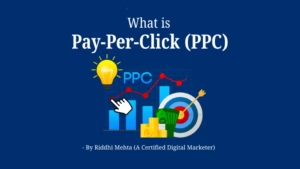
In the PPC advertising system, marketers are charged specifically for each click their digital ads receive, offering an immediate way to purchase website visitors as opposed to gradually building organic traffic.”
Key Platforms:
- Search Engines: Google Ads and Bing Ads allow you to display ads in search results for specific keywords.
- Social Media: Platforms like Facebook, Instagram, LinkedIn, and Twitter offer targeted advertising options based on user demographics, interests, and behaviors.
Benefits:
- Quick visibility is ensured by the ability of your adverts to quickly take the top spots in search results or show up in consumers’ social feeds. “Instant Exposure: Your advertisements can achieve prominent placement in search engine results or social media feeds immediately after campaign launch.
- Advanced targeting capabilities enable your ads to connect with the most pertinent audience segments.
- Measurable ROI: Detailed analytics allow you to track ad performance and optimize campaigns for better results.
3. Social Media Marketing (SMM)
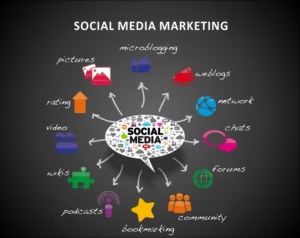
Social media marketing (SMM) is the practice of using social media platforms to interact with your audience, build your brand, and boost website traffic. It’s a powerful way to engage with customers and promote your products or services.
Popular Platforms:
- Facebook and Instagram: Perfect for B2C companies looking to use visual material to reach a large audience.
- LinkedIn: Best suited for B2B marketing, professional networking, and industry-specific content.
- TikTok: Offers opportunities to engage younger audiences with creative, short-form videos Strategies.
- Content Creation: It is the process of creating captivating articles, narratives, and films that appeal to your target audience.
- Community Engagement: Building relationships by replying to reviews, mails, and comments.
- Analytics and Optimization: Monitoring performance metrics to refine your strategy and improve results.
4. Content Marketing

Content marketing is a strategic approach that involves creating and distributing meaningful, timely, and consistent content to engage a targeted audience, with the ultimate aim of driving profitable customer actions.
Types of Content:
- Blog posts: Educative pieces that discuss problems faced by customers and offer fixes.
- Whitepapers and e-books: Comprehensive materials that create credibility and provide leads.
- Videos & Webinars: Engaging formats that can explain complex topics or showcase products.
- Infographics: It present information visually, capturing attention and conveying messages quickly.
Benefits:
- Builds Trust: Providing valuable information positions your brand as a thought leader.
- Enhances SEO: You may raise your search engine ranks by producing high-quality content.
- Generates Leads: Compelling content encourages users to take desired actions, such as signing up for newsletters or requesting demos.
5. Email Marketing

Email marketing serves as a direct digital marketing approach to engage both loyal customers and new prospects through personalized email communications. Strategic email campaigns have the power to transform potential leads into paying customers and elevate occasional buyers into devoted brand advocates.
Types of Emails:
- Newsletters: Newsletters serve as regular communications that keep your audience informed about your company’s latest developments and offerings.
- Promotional Emails: Messages that highlight sales, discounts, or special offers.
- Transactional Emails: Order confirmations, shipping notifications, and other purchase-related communications.
- Behavioural emails: Sent in response to user activity, including re-engagement campaigns or cart abandonment reminders.
Advantages:
- Cost-Effective: Offers a high return on investment compared to other marketing channels.
- Personalization: Makes it possible to tailor messages based on user behaviour and preferences.
- Measurable Outcomes: Uses analytics like conversions, click-through rates, and open rates to shed light on user engagement.
The rapid advancement of technology, including artificial intelligence (AI), voice search, and augmented reality (AR), continues to reshape digital marketing, making it essential for businesses to stay updated with the latest trends.
Mastering Core Digital Marketing Strategies for Sustainable Business Growth
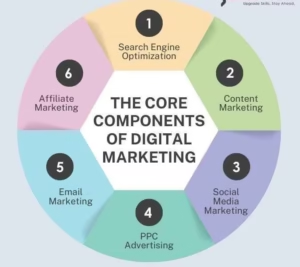
In today’s rapidly evolving digital landscape, businesses must adopt a multifaceted approach to effectively reach and engage their target audiences. Core digital marketing strategies such as Search Engine Optimization (SEO), Pay-Per-Click (PPC) advertising, Social Media Marketing (SMM), Content Marketing, and Email Marketing are essential components of a successful digital marketing presence. Understanding and implementing these strategies can significantly enhance brand visibility, customer engagement, and overall business growth.
1. Search Engine Optimization (SEO)
Increasing organic (non-paid) traffic to your website by optimizing it to rank higher in search engine results pages (SERPs) is known as SEO. As a crucial component of digital marketing, it involves keyword research, on-page optimization (like meta tags and content quality), off-page optimization (such as backlinks), and technical SEO (including site speed and mobile-friendliness). Effective SEO strategies improve visibility, drive targeted traffic, and build credibility with your audience.
2. Pay-Per-Click (PPC) Advertising
By paying a fee each time an ad is clicked, PPC advertising enables companies to display adverts on search engines and other platforms. Precise targeting based on user behaviour, demographics, and keywords is made possible by platforms such as Google Ads and Bing Ads. PPC offers immediate visibility and can be highly effective for driving traffic and conversions when managed properly.
3. Social Media Marketing (SMM)
Social media platforms like Facebook, Instagram, LinkedIn, and Twitter are used by SMM to communicate with audiences and promote products and services. It encompasses both organic activities (such as posting content and interacting with followers) and paid advertising campaigns. SMM helps build brand awareness, foster community engagement, and drive website traffic.
CQL
4. Content Marketing
Creating and disseminating worthwhile, timely, and consistent material is the main goal of content marketing in order to draw in and hold on to a target audience. This include eBooks, films, infographics, and blog entries that speak to the interests and requirements of your target audience. High-quality content establishes authority, improves SEO rankings, and nurtures customer relationships.
5. Email Marketing
Sending customized messages to a list of subscribers in order to disseminate news, advertise items, or offer useful information is known as email marketing. It’s a cost-effective way to maintain direct communication with your audience, personalize messaging, and drive conversions. Effective email campaigns are tailored to the recipient’s interests and behaviors, enhancing engagement and loyalty.
Implementing these core digital marketing strategies requires a cohesive plan that aligns with your business goals and audience needs. By integrating SEO, PPC, SMM, content marketing, and email marketing, businesses can create a robust online presence that drives sustainable growth and success in the digital age.
Emerging Trends in Digital Marketing (2024)
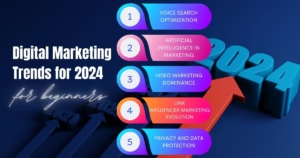
Artificial Intelligence (AI) and Automation

AI is transforming digital marketing by enabling hyper-personalization and automation. Chatbots, for example, provide instant customer support, while AI-powered tools like ChatGPT assist in content creation. Predictive analytics helps businesses anticipate customer behaviour, allowing for more targeted campaigns.
For instance, European fashion retailer Zalando has integrated generative AI to accelerate content production for marketing campaigns, significantly reducing both time and costs. By utilizing AI to create imagery and digital twins of models, Zalando can more swiftly respond to fast-moving fashion trends popularized on social media.
Moreover, AI-driven predictive analytics allows marketers to anticipate customer behaviour, enabling more targeted and effective campaigns. According to a Forbes article, AI is leading MarTech investment, driving operational excellence, and enhancing cross-functional alignment.
Voice Search Optimization

With the rise of smart speakers like Amazon Alexa and Google Assistant, optimizing for voice search has become crucial. People use natural language queries (e.g., “Where can I buy running shoes near me?”), In today’s digital landscape, businesses are prioritizing conversational content and long-tail keywords to align with user search behaviours. This method amplifies online visibility, ensuring that the content reaches and resonates with a more relevant audience.
The rise of voice-activated devices like Amazon Alexa and Google Assistant has made voice search optimization essential for businesses aiming to maintain visibility. Voice search queries are often conversational and question-based, requiring businesses to anticipate these inquiries and provide clear, concise answers.
To effectively optimize for voice search, businesses should:
- Utilize Long-Tail Keywords and Natural Language: Incorporate specific, conversational phrases that users are likely to speak into your content.
- Create Content Addressing Common Questions: Develop FAQs and content that directly answer the questions your audience frequently asks.
- Structure Content for Quick Responses: Organize your content with clear headings, bullet points, and concise paragraphs to facilitate easy reading and quick answers.
- Implementing these strategies can enhance your website’s visibility in voice search results, improve user experience, and drive more qualified traffic to your site.
Video Marketing Dominance

Video content remains a dominant force in digital marketing, with platforms like YouTube, TikTok, and Instagram Reels leading the way. Emerging trends such as live streaming, shoppable videos, and interactive content are becoming integral components of modern marketing strategies.
Short-form video content is a powerful tool in digital marketing, with platforms like TikTok, Instagram Reels, and YouTube Shorts leading the way. These platforms offer brands an unparalleled opportunity to connect with audiences through quick, engaging videos that cater to modern consumers’ preferences for easily digestible content. As attention spans shorten, the demand for concise and compelling video content continues to rise, making short-form videos an essential component of effective marketing strategies.
Short-form videos—typically under one minute—have emerged as a leading trend in video marketing, with 31% of marketers reporting the highest ROI from this format. In 2025, 57% of marketers already utilizing short-form videos plan to increase their investment in this content type, underscoring its growing significance in marketing strategies. Additionally, the integration of AI tools in video production is streamlining the creation process, allowing for rapid development of engaging content.
Interactive elements like shoppable videos and live streaming are also gaining traction, providing immersive experiences that drive consumer engagement and conversions.
Link Influencing Marketing Evolution

Link building has undergone a significant transformation, evolving from a focus on quantity to a strategic emphasis on quality and relevance. In the early days of digital marketing, acquiring numerous backlinks—regardless of their source—was a common tactic to boost search engine rankings. However, as search engine algorithms became more sophisticated, this approach shifted towards prioritizing high-quality, contextually relevant links that genuinely add value to users.
Modern link building strategies now centre around creating compelling, shareable content that naturally attracts backlinks from authoritative sources. This content-driven approach not only enhances SEO performance but also fosters trust and credibility with audiences. Additionally, the integration of social media platforms has amplified the reach and impact of link building efforts, allowing for broader dissemination and engagement.
The advent of artificial intelligence (AI) and machine learning has further refined link building practices. These technologies enable marketers to analyse vast amounts of data to identify optimal linking opportunities and predict user behaviour, leading to more effective and targeted campaigns. As a result, link building has become a dynamic and integral component of digital marketing, continually adapting to technological advancements and changing consumer expectations.
Privacy-First Marketing

With the introduction of stricter data privacy laws and the gradual elimination of third-party cookies, marketers are increasingly turning to first-party data—information collected directly from users—to inform their strategies. Strategies like email list building and loyalty programs are becoming more important.
As data privacy regulations intensify and third-party cookies become obsolete, marketers are increasingly adopting privacy-first strategies. This shift emphasizes the collection and utilization of first-party data—information gathered directly from consumers—to ensure compliance and foster trust. By focusing on transparent and ethical data practices, businesses can create more personalized and effective marketing campaigns, aligning with evolving consumer expectations and regulatory standards. This approach emphasizes the use of first-party data—information collected directly from customers with their consent. Implementing a privacy-first strategy involves.
Building transparent data collection practices.
Developing loyalty programs to encourage data sharing.
Utilizing privacy-focused tools and platforms.
A Google-Ipsos survey reveals that 49% of consumers would switch from their preferred brand to a second-choice brand if the latter offers a superior privacy experience . This underscores the importance of privacy-first marketing strategies, which not only ensure compliance with data regulations but also build trust and strengthen customer relationships.
Conclusion
Digital marketing is an ever-evolving landscape that demands marketers to stay agile and continually update their skills. By leveraging SEO, PPC, social media, and emerging trends, businesses can achieve sustainable growth in the digital age. The key is to stay informed, test new strategies, and focus on delivering value to your audience.
For businesses looking to enhance their digital marketing efforts, partnering with experts or investing in training can provide a competitive edge.
Author: Shafna K. K.

